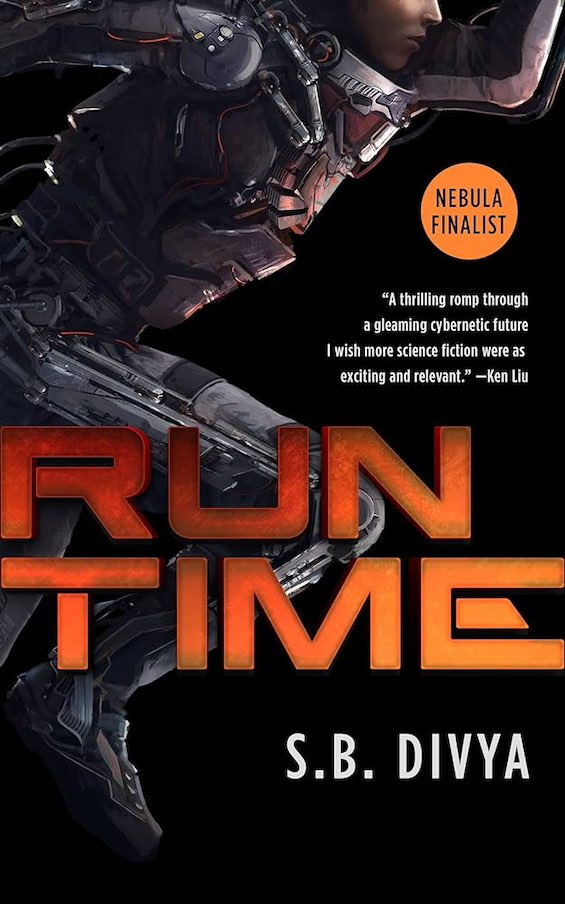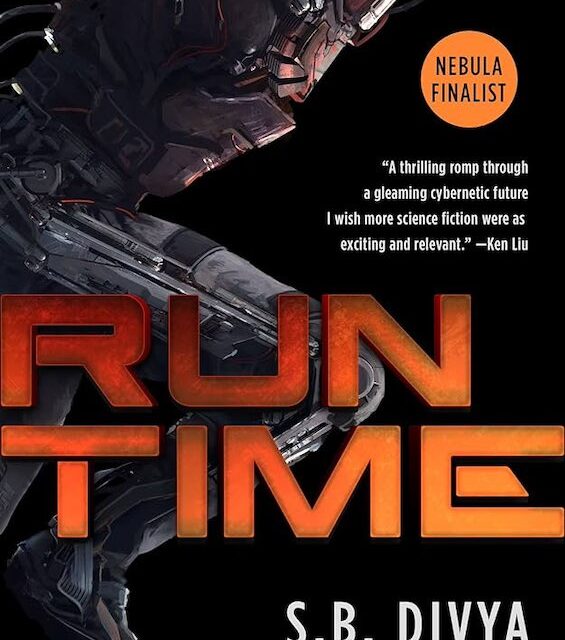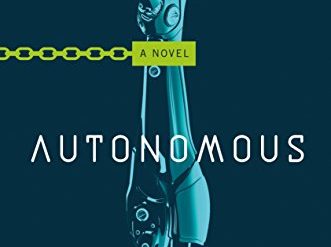
When we read science fiction set in the near future, we expect three things above all. A reasonably advanced version of current technology. A plausible extrapolation of today’s political and economic trends. And a credible picture of the world after climate change has worked its way. Of course, we also expect believable characters portrayed in an engaging writing style and a plot that drives the story forward. And you’ll find all that in S. B. Divya’s debut novella, Run Time, a promising SF debut which reached the finals of the Nebula Awards. It’s a simple story of an ambitious young woman running a future version of the marathon using enhanced technology.
Estimated reading time: 4 minutes
A poor young woman sets out to win a race
Marmeg is seventeen and a gifted long-distance runner. And she has cobbled together from discarded parts the robotic exoskeleton she will need to compete in the Minerva Challenge, a seventy-five-mile race from Los Angeles to the mountains. Only by winning, or placing in the top five, can she earn the money she needs for tuition to study for a degree in elder care, pay for the surgery to become a “moot,” and eventually lift her family out of poverty. Because Marmeg lives in a society that is just barely recognizable to us.
Run Time by S. B. Divya (2016) 118 pages ★★★★☆

American society has evolved in surprising ways
In Marmeg’s world, as a Congressman says on the news, “US citizenship is a birthright. Voting is a birthright. . . But social services—public education, health care, retirement benefits—those need to be earned. Unlicensed families haven’t paid into the system.” But it takes money to buy the license that will admit a child to these benefits. And few now have the means to do so. Meanwhile, the tiny minority of the rich and powerful benefit from increased intelligence and enhanced senses through implants embedded in their arms. And they indulge their fantasies by undergoing surgery to become “moots,” showing ambiguous sexual characteristics. And Marmeg dreams of joining them.
The Minerva Challenge, with its generous prize money, promises Marmeg the chance to break out of the life she’s trapped in. “Her embedded control chips were legit,” Divya writes, “but the surgery to put them in wasn’t, and her exoskeletal gear was filched from trash bins in rich neighborhoods.” But, despite the limitations, she’s confident she can at least place in the top five in the race. She’s resourceful, fiercely determined, and has extraordinary stamina. But she hasn’t reckoned with the surprises she’ll face along the way.
About the author

S. B. Divya‘s bio on her author website reads in part as follows: “I am born of one country, raised in another, of middling age, partnered, and childed. My gender doesn’t conform to social standards.
“I studied science, worked in engineering, love math, play with language, and make art. I write stories—mostly science fiction—and sometimes I’m lucky enough to get paid for it. I’ve worked for 20 years as an electrical engineer in various fields including pattern recognition, machine intelligence, high speed communications, digital music, and medical devices.”
Wikipedia is a little more revealing. “S. B. Divya is the pen name of Divya Srinivasan Breed.” She was born in Pondicherry, India, but immigrated to the United States with her parents when she was five. Divya holds a BS degree from the California Institute of Technology (Caltech) with a major in Computation and Neural Systems, and an M.Eng. in Signal Processing from the University of California, San Diego. To date, she has written two novels in addition to this promising SF debut as well as a collection of shorter pieces. Her work has been nominated twice for the Hugo Award and once for the Nebula.
For related reading
For more good reading, check out:
- These novels won both Hugo and Nebula Awards
- The ultimate guide to the all-time best science fiction novels
- The top science fiction novels
- The top 10 dystopian novels
- 10 new science fiction authors worth reading now
And you can always find my most popular reviews, and the most recent ones, on the Home Page.



























